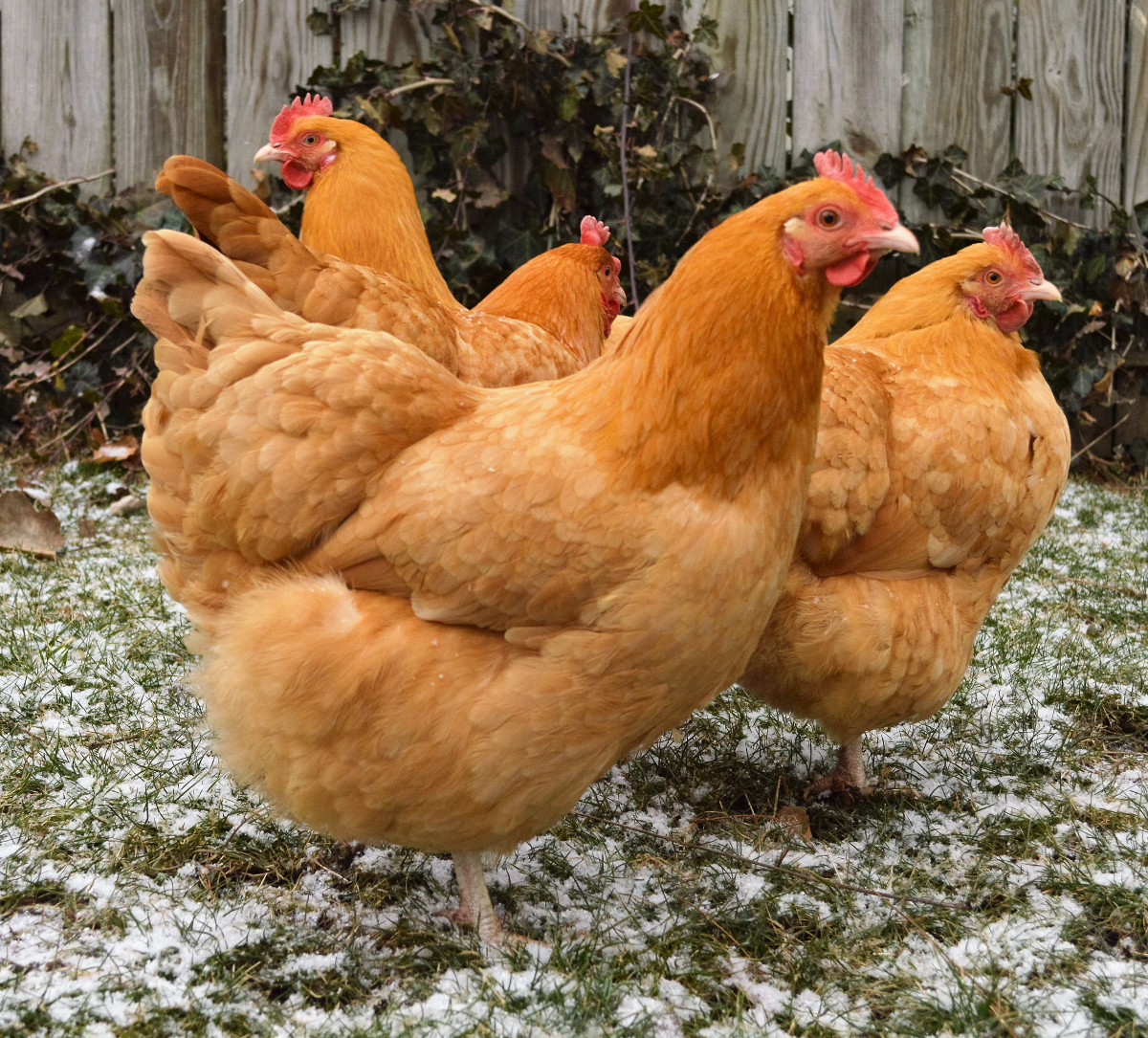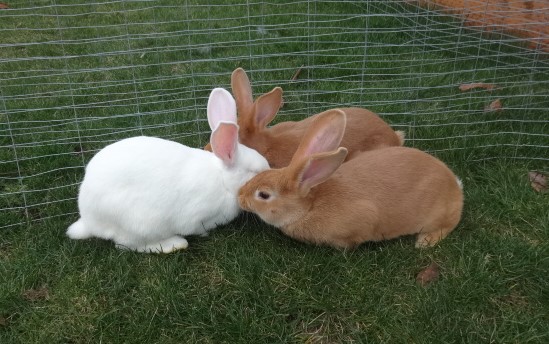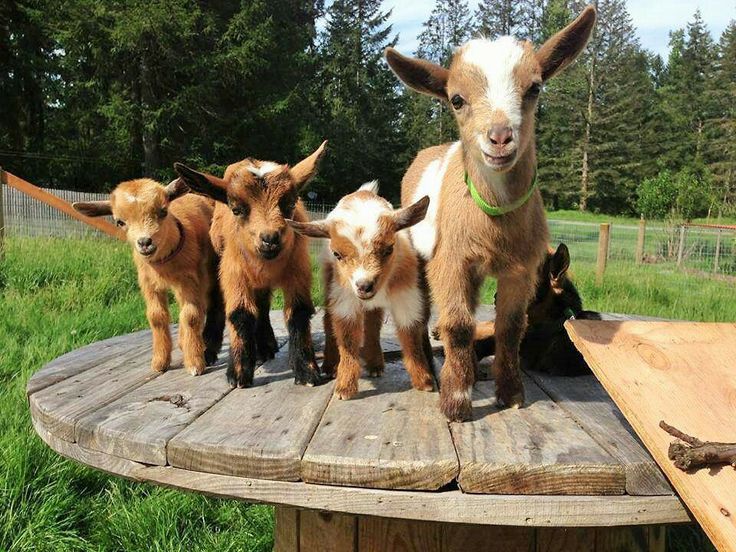
Chickens
The Orpington is a breed of chicken named after the town of Orpington, Kent, in south-east England, which was made famous in part by this breed. It was bred to be an excellent layer with good meat quality. Its large size and soft appearance together with its rich colour and gentle contours make it very attractive, and as such its popularity has grown as a show bird rather than a utility breed. Hens often become broody and are good mothers. Although rather heavy, they are able to fly small distances but rarely do so.

Rabbits
The New Zealand is a breed of rabbit, which despite the name, is American in origin. The breed originated in California, possibly from rabbits imported from New Zealand. New Zealand rabbits are available in five ARBA-recognized colors: white, red, black, blue, and broken (color mingled with white). Crossbreeding can result in many different combinations of the three basic pigmentations. The most common of these variations are gold tipped steel and chestnut agouti. They average 10 to 12 lb (5 kg) with the does being slightly larger than the bucks.

Goats
Goats are naturally curious. They are also agile and well known for their ability to climb and balance in precarious places. This makes them the only ruminant to regularly climb trees. Due to their agility and inquisitiveness, they are notorious for escaping their pens by testing fences and enclosures, either intentionally or simply because they are used to climb on. If any of the fencing can be overcome, goats will almost inevitably escape. Due to their intelligence, once a goat has discovered a weakness in the fence, they will exploit it repeatedly, and other goats will observe and quickly learn the same method.

Sheep
People have raised sheep for milk, meat, and wool for thousands of years. Sheep have some advantages over other types of livestock: they're relatively small and easy to handle, compared with cows and pigs. They don't need perfect pasture, and they eat brush, grasses, and weeds that grow in poor soil. Sheep manure will fertilize the soil. They are gentle and docile (although rams can be aggressive at times) and they are trainable (you can teach them to come when called, to follow you, and to stand). They don't need much space, either: even one acre can support a small flock - three or four ewes and their lambs.

Turkeys
A turkey's wishbone — the one you and your sister pull from opposite ends to see who gets the middle nodule — is formed by the fusion of the bird's two collarbones. Also called a furcular, the bone serves as the connecting point for muscles and a brace for the wings. During the bird's flapping (yes, turkeys can fly at a clip of 50 mph in short bursts), the wishbone acts as a spring to store and release energy. This elasticity is also the reason snapping a wishbone before it dries is so tough. Turns out, the wishbone is more than a fun game for Turkey Day; it also serves as a reminder that birds evolved from a group of dinosaurs. Researchers have found that the wishbone dates back more than 150 million years to a group of meat-eating dinosaurs that includes T. rex and Velociraptor.